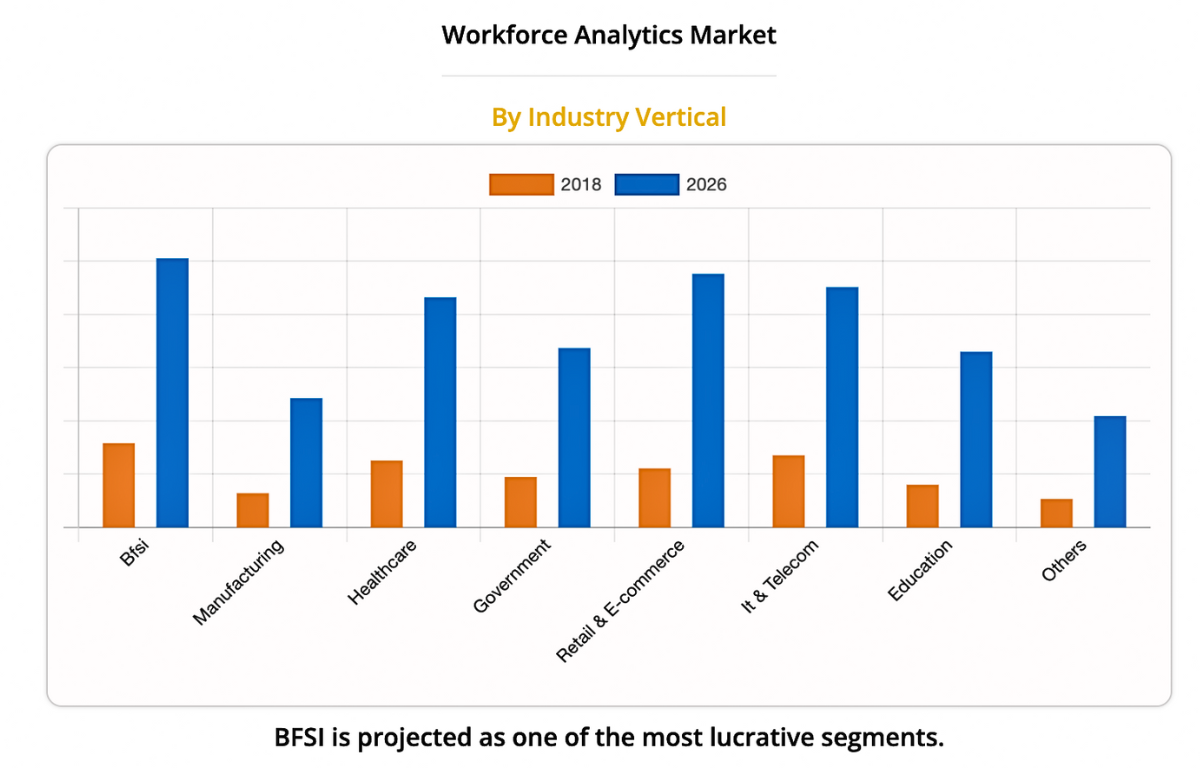
In today’s fast-paced and evolving world of worker acquisition, engagement and retention, workforce analytics is vital in driving data-informed workforce planning, decision-making and management. But what exactly is workforce analytics, and why should employers care about it?
While every organisation depends on strategic decision-making about factors ranging from operations to sales, informed decisions concerning human resources are critical to a business’s survival. This importance increases even further during times of crisis, as employers will have learned firsthand at the height of COVID-19 lockdowns and the economic downturn caused by the pandemic and the ongoing Russo-Ukrainian War.
5 Ways to Create a Recession-Proof Workplace
A company’s workforce is one of any business’s most complex and critical assets. But employees are also vulnerable to industry shifts, economic downturns and disruptions. Building a comprehensive understanding of your teams can help you gain insight into their needs and how they compare to your business goals, allowing you to develop more effective strategies to protect your workforce and maintain — or gain — your competitive advantage.
This is where workforce analytics comes in.
Make Smart Decisions With Big Data
“Big data” — it’s arguably the most significant corporate buzzword of the last decade, and for good reason. Data — delivered in increasing volumes and velocities — is the lynchpin of modern business operations, so much so that the International Data Corporation (IDC) predicts that the big data and analytics software market will grow beyond $180 billion in value by 2026.
When applied to human resources, data analytics empowers your organisation by providing better insights into what works and doesn’t for your people. And while it may seem that workforce analytics is just a numbers game fuelled by hard data, it can also account for qualitative factors that add context to your metrics and key performance indicators (KPIs).
What Is Workforce Analytics?
Workforce analytics — sometimes used interchangeably with HR analytics and people analytics — refers to a combination of software-driven methods and practices that leverage statistical models to capture, measure and analyse workforce-related data. This data enables employers to identify trends and patterns in employee behaviour, performance, and engagement.
When used effectively, workforce analytics can help employers better understand their workforce and make more informed decisions about how to invest in their employees. It can also help predict future workforce needs and assess the effectiveness of workforce policies and programs.
The rise of workforce analytics comes when the workplace increasingly uses data analytics to improve decision-making about hiring, training, compensation, retention, and succession planning. It’s a global market estimated to be worth $1.64 billion in 2018. According to a report by Allied Market Research, projections now show it is likely to grow to $5.97 billion by 2026.
Source: Allied Market Research
Meanwhile, the top three industries driving the workforce analytics market’s growth are banking, financial services and insurance (BFSI), retail and eCommerce, and IT and telecommunications.
What Are The Applications Of Workforce Analytics?
Workforce analytics have multiple HR applications, some of which will be critical to your organisation’s needs. Whatever the case, workforce analytics platforms can help you spot trends and patterns in worker activity, analyse performance and monitor these common workforce KPIs and metrics.
1. Employee engagement
Employers have always been interested in employee engagement. Employee engagement is often used to measure employee happiness, assuming that happy employees are more productive. An Oxford study found that employees are 13% more productive when happy. Organisations with engaged workers have double the success rate of companies with less engaged workers.
Building an Employee Engagement Strategy for 2022
But employee engagement has surged to the top of many companies’ priorities as business leaders begin to rethink the meaning of the workplace.
Does it align with our idea of a traditional, co-located office? Or will the worker push for hybrid working — where teams split their time between remote working and the office — prevail and force companies to adopt flexible working practices? Our latest research on the future of the workforce shows that hybrid workers now make up half of the workforce in the US and UK.
Download: The Future of Work — 8 Trends in Workplace Transformation Report
In any case, workforce analytics software can help you track and measure KPIs associated with employee engagement. These include:
- Employee turnover
- Productivity levels
- Net promoter score.
2. Diversity and inclusion
The simplest way to measure diversity and inclusion in your organisation is to pay close attention to the makeup of your workforce based on age, gender, and ethnicity. But it’s also essential to go beyond creating so-called diversity quotas and calling it a day.
Another way to measure diversity and inclusion in your workforce is to look at each employee’s presence in the company. For example, you could track each employee’s title and level to measure how much relative responsibility they have. Measuring each employee’s influence on your company’s decision-making processes, from recruitment to training and retention, is possible.
3. Absenteeism and turnover
Absenteeism and turnover are vital metrics in workforce analytics programmes. The cost of replacing an employee can exceed 60% of their annual salary. That’s on top of other expenses, like reduced productivity, training costs, and low morale. A high turnover rate often correlates with high levels of absenteeism.
Measuring absenteeism and turnover is easy enough if you have a system for tracking hours and days worked. Understanding what the numbers mean is tricky, especially if you don’t know where to look.
You could track when people stop showing up for work and leave. If your turnover rate for new hires (i.e., employees on payroll for less than a year) is higher than the industry average, this could be a sign that employees feel disengaged because of poor job compatibility. If this is the case, consider investing more time in improving your recruitment processes, writing more precise job descriptions, and communicating your workplace culture more effectively.
4. Employee net promoter score (eNPS)
One sign that your employees feel engaged is that they’re willing to recommend your company to their peers as a workplace. Quantify Recommendations through an Employee Net Promoter Score (eNPS) — a system for measuring the likelihood of your staff promoting you using a scale of 0 to 10. It’s a Net Promoter Score (NPS), a metric for measuring customer satisfaction created by Fred Reichheld of Bain & Company.
eNPS is by no means a comprehensive indicator of employee engagement or performance. Still, you can use it with other workforce analytics metrics to get a snapshot of employee sentiment and attitudes.
5. Professional growth
Opportunities for personal growth and career advancement are critical to engagement and loyalty. According to Profile Resourcing, employees are leaving their roles in 2023 because they want greater opportunities for growth. A survey by The World Economic Forum in 2022 revealed that the highest proportion of respondents cited “Lack of career development/advancement” and “inadequate compensation” as the top two reasons for quitting a role.

Consider looking at the number of employees promoted within the last one to five years in your company. However, movement in any direction — not just vertical — should also be considered growth. The freedom to move across departments, business units, and teams is also an essential driver of satisfaction in the workplace.
What Are The Benefits Of Workforce Analytics?
At its simplest, workforce analytics allows enterprise leaders to optimise their human resource management (HRM) practices and procedures. Including the ability to improve the following tasks and activities:
- Predicting your hiring needs whilst accounting for seasonal staffing demand
- Controlling staffing costs
- Optimising staffing schedules
- Optimising office real estate usage (ideal for companies that want to shift to hybrid working)
- Tracking and improving worker productivity
- Identifying workforce inefficiencies (e.g., poorly optimised tasks and workflows)
- Identifying and plugging skill and knowledge gaps
- Reducing employee turnover and improving retention
- Identifying and managing workforce compliance risks
- Benchmarking against similar-sized organisations in your industry.
How To Introduce Workforce Analytics To Your Organisation
Although your approach to implementing workforce analytics in your organisation will depend on your specific objectives and employees’ needs, there are tried and proven steps to help you head in the right direction.
1. Determine your purpose and objectives
Every data analytics project must begin with the simple question: “Why are we doing this?” The same is true when implementing workforce analytics — you need to ask yourself what business outcomes you want to achieve by using data to drive your HR decisions. Identifying your objectives and purpose is also integral to winning support from your managers, team leaders and employees.
2. Create a project scope statement
A project scope statement is a document that defines all the elements of your workforce analytics project, including its requirements, objectives and acceptance criteria, among others. The project scope statement will also serve as the primary reference tool for your company’s stakeholders and guidelines to measure the implementation of workforce analytics.
Cloudbooking tip: Incorporate industry data and benchmarks, internal research, case studies and knowledge from industry experts and bodies to create an actionable project statement.
3. Commence ethical data gathering
At this stage, you’ll need to identify your workforce data — the KPIs and metrics relevant to your project’s goals. You’ll also need to decide whether to gather existing data, new data or both. For best results, ensure your data sources go beyond your HR department, including accounting, project management and customer relationship management (CRM).
Gathering workforce data can have legal and ethical implications, so you must capture, measure and analyse data to comply with data privacy and security compliance standards.
4. Establish your KPIs and metrics
Your project purpose and objectives should inform your choice of workforce KPIs and metrics to monitor. However, you should also establish your KPI targets — the outcome you wish to achieve by measuring and analysing your workforce data. For example, one of your project objectives might be to reduce your turnover rate. Ensure you have a target figure (e.g., less than 10%) to guide your efforts.
5. Organise your workforce analytics dashboards and reports
Workforce data is useless if your key stakeholders can’t understand what the numbers and statistics mean. This step involves organising and visualising your workforce data using dashboards in meaningful and engaging ways. Investing in a workforce analytics solution is where the platform will automatically display meaningful KPIs and metrics using real-time dashboards.
Workforce analytics platforms will also build reports against your project objectives, ensuring your stakeholders can understand your workforce’s performance, engagement level, satisfaction and more. The more precise and actionable your reports are, the more value your workforce analytics project will create for your business.
Make Data-Driven Workplace Decisions With Workforce Analytics
Workforce analytics is valuable for any organisation looking to improve workplace performance. By tracking the right KPIs and metrics, organisations can identify areas of improvement and make changes to support their people better.
Find more insights about workforce management on the Cloudbooking blog. If you need a cloud-based solution that provides an overview of how your teams interact with your office spaces, contact the Cloudbooking team to learn more about our workplace management platform. Schedule an obligation-free demo to learn more.





